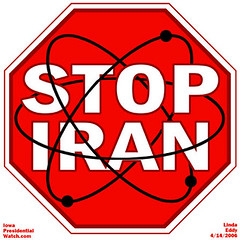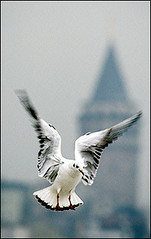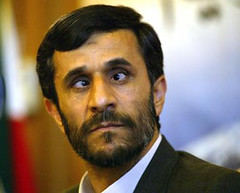Monday, April 23, 2007
TOP SYRIAN MILITARY BRASS IN IRAN
A large, high-ranking Syrian delegation of 40 generals on secret mission to Tehran
Debka ^ 04/23/07
Led by Maj. Gen. Yahya L. Solayman, War Planning chief at the Syrian armed forces General Staff, the delegation represents all branches of the Syrian armed forces.
On their arrival on April 18, the Syrian officers went straight into conference with Iranian defense minister Brig. Gen. Mostafa Mohammad-Najjar, Revolutionary Commanders chief Maj. Gen. Yahya Rahim-Safavi and dep. chief of staff Maj. Gen. Hassani Sa’di, who is Iran’s chief of military war preparations.
The Syrian visitors were taken around RG and armed forces training installations and given a display of the latest Iranian weapons systems, including stealth missiles, electronic warfare appliances and undersea missiles and torpedoes. They also visited the big Imam Ali training base in N. Tehran, where hundreds of Lebanese Hizballah and Palestinian Hamas and Jihad Islami terrorists are taking courses.
In Washington and Jerusalem, there is little doubt that the two allies timed the Syrian delegation’s mission to Tehran as a rejoinder to US defense secretary Robert Gates’ Middle East tour last week.
Israel sees four causes for concern:
1. The unusually large size of the Syrian delegation and the presence of operations officers from the various army corps.
2. The elevated positions of the Iranian officials hosting the Syrians: the top men with responsibility for preparing the RGs and armed forces for armed conflict.
US and Israeli intelligence experts agreed in their talks during Gates’ two-day visit to Israel last week on the object of the Syrian mission: to tighten operational coordination at the highest level between the Syria military and Iran’s armed forces and Revolutionary Guards.
3. The installations and weapons shown the Syrian officers. The intelligence estimate is that they saw the weapons systems soon to be consigned by Iran to the Syrian army and Hizballah, as well as the types of assistance pledged for Syria in the event of a military showdown with the United States or Israel. Syrian-Iranian consultations must also be presumed to have cleared the routes by which these weapons would reach Syria and Hizballah in a military contingency.
During the 2006 Hizballah-Israel war, Iran ran an airlift to Damascus through Turkish airspace and over the Mediterranean
.
4. The unusual length of the visit. Monday, April 23 the Syrian officers were still busy in Tehran after six days and showed no sign of leaving.
Subscribe to:
Post Comments (Atom)














No comments:
Post a Comment